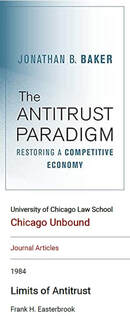
It is possible to combine these elements into a framework used by economists in competition law (antitrust). The framework seeks to minimise the cost of errors. The total cost of errors is (1) the error of awarding a penalty that should not have been awarded, (2) the error of not awarding a penalty that should have been awarded, and (3) the cost of decision-making system.
The introduction of VAR increased the decision-making costs and decreased, but not eliminated, type-1 and type-2 errors (also known as false positives and false negatives). Given the importance of type-1 and type-2 errors then it is hard to argue for the removal of VAR. Improvements in the use of VAR will reduce the costs of the third component.
The error cost framework also allows us to consider the presumptions behind the rules we use and how these presumptions shift the burden of proof. In the case of penalties, the spur of the moment decision by the referee is presumed to be correct. There must be a clear and obvious error for the decision of the referee to be overturned. The presumption is closer to the presumption of innocence in criminal cases. The burden of proof is higher than the balance of probabilities one might find in civil cases.
Time is important. Compare the way decisions about penalties are made with the way decisions are made about offside. In the latter case, the assistant referee is advised to delay any decision with an element of doubt. The cost of type-1 and type-2 errors is likely to be smaller than in the case of penalty kicks but the system costs are higher due to number of such decisions. Where a goal results then it is reviewable. However, in the case of offside decisions, the technology, and those operating it, are judge & jury. Again, it seems VAR reduces the error costs associated with the decisions.
It is important to note that the technology is not error free and its users are not without bias. False positives will remain. Rather than get into a discussion of false positives in the context of technology, let me recommend a visit to the website of the photographer Esther Hovers. Or better still, a visit to the Data Streams exhibition at the Glucksmann, University College Cork. The exhibition incorporates some of Hovers’ work.
 RSS Feed
RSS Feed